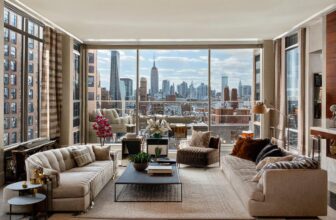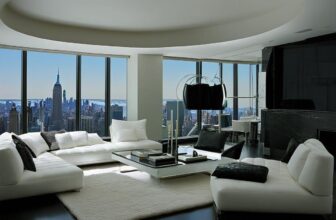
What Does an Interior Decorator Do? A Comprehensive Guide
Interior decoration is an art and science that transforms spaces into aesthetically pleasing, functional, and harmonious environments. While interior designers often focus on structural and architectural aspects, interior decorators specialize in the finishing touches that make a space feel complete. If you’ve ever wondered what an interior decorator does, this guide will provide an in-depth look into their role, skills, responsibilities, and the value they bring to a project.
The Role of an Interior Decorator
At its core, the role of an interior decorator is to enhance the aesthetic appeal of a space. They work with clients to select and arrange furnishings, color palettes, fabrics, lighting, and accessories that reflect personal tastes, needs, and styles. While they do not typically engage in structural renovations, their work complements the foundational design, creating a cohesive and inviting atmosphere.
Key Responsibilities of an Interior Decorator
1. Client Consultation
The first step in any project is understanding the client’s needs, preferences, and goals. During this consultation phase, the decorator:
- Discusses the client’s vision and budget.
- Assesses the space’s existing layout, lighting, and architectural features.
- Identifies functional requirements, such as seating arrangements, storage needs, or specific themes.
2. Concept Development
Once the decorator understands the client’s desires, they develop a concept or theme for the space. This involves:
- Creating mood boards or visual presentations to communicate ideas.
- Selecting a color palette that aligns with the desired ambiance.
- Proposing furniture styles, materials, and finishes.
3. Space Planning
Effective space planning ensures that the arrangement of furnishings maximizes functionality and comfort. Decorators consider:
- Traffic flow and ergonomics.
- The proportion and scale of furniture relative to the room size.
- The placement of key elements to create balance and harmony.
4. Product Sourcing and Procurement
A significant part of an interior decorator’s job is sourcing and purchasing items. This includes:
- Researching vendors and suppliers for furniture, fabrics, and decor.
- Managing budgets to ensure cost-effectiveness.
- Coordinating deliveries and installations.
5. Styling and Installation
The final stage of the project is bringing the vision to life. Decorators:
- Arrange furniture and decor to achieve the desired look.
- Style surfaces such as bookshelves, coffee tables, and countertops.
- Add finishing touches like artwork, rugs, and plants to complete the space.
Skills and Qualities of an Interior Decorator
Interior decorators need a blend of creative, technical, and interpersonal skills to excel in their role. Key qualities include:
1. Creativity and Vision
A strong sense of aesthetics and the ability to envision a cohesive design are essential. Decorators must think outside the box to create unique and personalized spaces.
2. Attention to Detail
From selecting the perfect shade of paint to arranging throw pillows, decorators must ensure every element contributes to the overall design.
3. Communication Skills
Working closely with clients requires excellent listening and communication skills. Decorators need to translate a client’s ideas into tangible designs while managing expectations.
4. Budget Management
Decorators must balance creativity with practicality, delivering stunning designs within the client’s budget.
5. Knowledge of Design Trends
Staying updated on industry trends, materials, and technologies allows decorators to offer innovative solutions.
The Process of Working with an Interior Decorator
Hiring an interior decorator can be a rewarding experience, especially when you understand the typical workflow. Here’s what to expect:
1. Initial Meeting
The first meeting is all about discovery. The decorator will:
- Ask about your preferences, lifestyle, and goals.
- Take measurements and photos of the space.
- Discuss your budget and timeline.
2. Design Proposal
After gathering information, the decorator will present a design proposal, including:
- Concept boards or sketches.
- Suggested materials, furniture, and accessories.
- A detailed cost estimate.
3. Approval and Implementation
Once the proposal is approved, the decorator begins sourcing and purchasing items. They’ll also coordinate with contractors or installers if necessary.
4. Final Reveal
The project concludes with the decorator styling and arranging the space. This is the moment where the vision becomes reality.
Types of Projects Interior Decorators Handle
Interior decorators work on a variety of projects, ranging from single-room makeovers to large-scale residential or commercial designs. Common projects include:
1. Residential Spaces
- Living rooms, bedrooms, kitchens, and dining areas.
- Home offices and outdoor living spaces.
- Seasonal or holiday decor updates.
2. Commercial Spaces
- Offices, retail stores, restaurants, and hotels.
- Reception areas and meeting rooms.
- Pop-up shops or event spaces.
3. Specialized Spaces
- Kid-friendly rooms or play areas.
- Wellness spaces like yoga studios or spas.
- Themed interiors for unique occasions.
The Difference Between an Interior Decorator and an Interior Designer
Though often used interchangeably, the roles of interior decorators and interior designers are distinct:
- Interior Designers: Focus on structural and architectural elements, often requiring formal education and licensure. They handle tasks like space planning, electrical layouts, and building code compliance.
- Interior Decorators: Specialize in the aesthetic aspects of a space, focusing on color schemes, furnishings, and decor. Their work does not typically involve structural changes.
The Value of Hiring an Interior Decorator
Hiring an interior decorator can save time, reduce stress, and ensure a polished outcome. Here are some benefits:
1. Expertise and Experience
Decorators bring a trained eye to the project, offering solutions you might not have considered.
2. Access to Resources
They have connections with suppliers, artisans, and contractors, often securing discounts or exclusive items.
3. Customized Designs
Decorators tailor designs to suit your unique style and needs, creating a space that truly feels like home.
4. Time and Budget Management
With a decorator handling the logistics, you can focus on enjoying the process rather than managing details.
Trends in Interior Decoration
The world of interior decoration is ever-evolving, with trends shaping the way we design and decorate our spaces. Current trends include:
- Sustainable Design: Using eco-friendly materials and repurposed items.
- Maximalism: Bold patterns, vibrant colors, and layered textures.
- Biophilic Design: Incorporating natural elements like plants and organic shapes.
- Minimalism: Clean lines, neutral palettes, and a focus on functionality.
How to Become an Interior Decorator
If you’re passionate about design and want to pursue a career in interior decoration, here’s how to get started:
1. Education and Training
While formal education isn’t always required, courses in design principles, color theory, and space planning can be beneficial.
2. Build a Portfolio
Showcase your work through a portfolio of completed projects, including before-and-after photos.
3. Gain Experience
Work with established decorators or take on small projects to build confidence and skills.
4. Network
Join professional organizations like the American Society of Interior Designers (ASID) to connect with industry professionals and gain credibility.
Final Thoughts
Interior decorators play a crucial role in transforming spaces into personalized havens. Their expertise in blending aesthetics with functionality ensures that every project results in a harmonious and inviting environment. Whether you’re looking to refresh a single room or reimagine your entire home, an interior decorator can help you achieve your vision with style and finesse.





